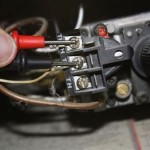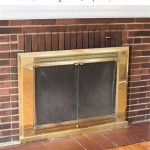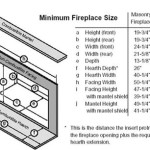How to Clean a Brick Fireplace Indoors
A brick fireplace serves as a focal point in many homes, providing warmth and aesthetic appeal. However, regular use inevitably leads to the accumulation of soot, creosote, and ash, diminishing its visual charm and potentially posing fire hazards. Maintaining a clean indoor brick fireplace is crucial for both its appearance and safety. This article provides a comprehensive guide to cleaning a brick fireplace effectively and safely.
The process of cleaning a brick fireplace indoors involves several steps, beginning with preparation and proceeding through cleaning solutions, scrubbing techniques, and preventative measures. Failing to maintain a clean fireplace can lead to issues beyond aesthetics, including chimney fires due to creosote buildup. Therefore, investing time and effort into regular cleaning is a worthwhile endeavor.
Preparation is Key
Before commencing the cleaning process, thorough preparation is essential. This stage involves gathering necessary materials and protecting the surrounding area to prevent further mess and damage.
First, assemble the required cleaning supplies. These typically include:
*A stiff-bristled brush (preferably with a long handle for reaching higher areas).
*A vacuum cleaner with a hose attachment.
*A drop cloth or plastic sheeting.
*A bucket.
*A sponge or rag.
*Rubber gloves.
*Eye protection (goggles or safety glasses).
*A respirator or dust mask.
*Cleaning solutions (discussed in the next section).
Once the supplies are gathered, the next step involves protecting the area surrounding the fireplace. Spread the drop cloth or plastic sheeting extensively across the floor and any nearby furniture. This protective layer will prevent soot and ash from staining or damaging surfaces. It is also prudent to open windows to ensure adequate ventilation during the cleaning process, especially when using cleaning solutions.
Finally, remove any loose debris from inside the fireplace. This includes larger pieces of ash, unburnt wood, and any other accumulated materials. Use a shovel or small container to scoop out the debris and dispose of it properly in a metal container away from flammable materials.
Choosing and Applying Cleaning Solutions
Selecting the appropriate cleaning solution is crucial for effectively removing soot and stains from the brick. There are several options available, ranging from commercially available cleaners to homemade solutions.
Commercial Brick Cleaners:
Numerous commercial brick cleaners are available in hardware stores and online retailers. These cleaners are specifically formulated to remove soot and grime from brick surfaces. When selecting a commercial cleaner, carefully read the product label and follow the manufacturer's instructions. It is advisable to test the cleaner on an inconspicuous area of the fireplace first to ensure it does not damage or discolor the brick. Always wear gloves and eye protection when handling commercial cleaning products.Homemade Cleaning Solutions:
For those preferring a more natural approach, several effective homemade cleaning solutions can be used. Some popular options include: *Vinegar and Water:
A solution of equal parts white vinegar and water can be effective for removing light soot and grime. The acidity of the vinegar helps to break down the deposits without being overly harsh. *Baking Soda Paste:
A paste made from baking soda and water is another gentle cleaning option. The baking soda acts as a mild abrasive and can help to lift stains from the brick. *Dish Soap and Water:
A solution of mild dish soap and water can be used for general cleaning and removing surface dirt. Avoid using excessive amounts of soap, as it can leave a residue. *Trisodium Phosphate (TSP):
TSP is a more powerful cleaner that can be effective for removing stubborn stains. However, it is important to use TSP with caution, as it can be harsh on skin and surfaces. Always wear gloves, eye protection, and a respirator when using TSP. Ensure adequate ventilation and avoid using TSP on delicate brick surfaces.Once the chosen cleaning solution is prepared, apply it to the brick using a sponge or rag. For larger areas, a spray bottle can be used to distribute the solution evenly. Allow the solution to sit on the brick for several minutes to allow it to penetrate and loosen the soot and grime. The dwell time will depend on the severity of the staining and the type of cleaning solution used. Refer to the product label for specific instructions if using a commercial cleaner.
Scrubbing and Rinsing the Brick
After the cleaning solution has had sufficient time to dwell, the next step is to scrub the brick thoroughly to remove the loosened soot and grime. This is typically done using a stiff-bristled brush. Apply moderate pressure and work in small sections, scrubbing in a circular motion. Pay particular attention to areas with heavy staining or creosote buildup.
For stubborn stains, a more abrasive scrubbing tool, such as a scrub pad or steel wool, may be necessary. However, use these tools with caution, as they can scratch or damage the brick surface. It is advisable to test these tools on an inconspicuous area of the fireplace first to ensure they do not cause any damage.
As the soot and grime are loosened, frequently rinse the brush or scrubbing tool in clean water to prevent redistributing the dirt back onto the brick. Continue scrubbing until all visible soot and stains have been removed. This may require multiple passes, especially for fireplaces that have not been cleaned recently.
After scrubbing, thoroughly rinse the brick with clean water to remove any remaining cleaning solution and loosened debris. Use a sponge or rag to wipe down the brick, ensuring that all traces of the cleaning solution are removed. Repeat the rinsing process as necessary until the water runs clear.
Once the brick has been thoroughly rinsed, allow it to dry completely. This may take several hours or even overnight, depending on the humidity and ventilation in the room. Opening windows or using a fan can help to speed up the drying process. Avoid using the fireplace until the brick is completely dry.
After the brick is dry, inspect it carefully for any remaining stains or grime. If necessary, repeat the cleaning process on stubborn areas. For particularly difficult stains, consider using a specialized brick cleaner or contacting a professional cleaning service.
Additional Considerations and Preventative Measures
In addition to the basic cleaning steps, several other considerations can help to improve the effectiveness and longevity of the cleaning process.
Addressing Creosote Buildup:
Creosote is a highly flammable substance that accumulates in chimneys and fireplaces as a byproduct of burning wood. Regular cleaning is essential to prevent creosote buildup, which can pose a serious fire hazard. If significant creosote buildup is present, it is advisable to contact a professional chimney sweep to inspect and clean the chimney. Chimney sweeps have specialized tools and expertise to safely remove creosote buildup.Sealing the Brick:
After cleaning the brick, consider applying a brick sealer to protect it from future staining and moisture damage. Brick sealers are available in various formulations, including water-based and solvent-based options. When selecting a brick sealer, choose one that is specifically designed for use on fireplace bricks. Follow the manufacturer's instructions carefully when applying the sealer. It is advisable to test the sealer on an inconspicuous area of the fireplace first to ensure it does not alter the appearance of the brick.Maintaining Proper Ventilation:
Proper ventilation is essential for reducing the amount of smoke and soot that accumulates in the fireplace. Ensure that the flue is open when using the fireplace to allow smoke to escape properly. Additionally, consider installing a fireplace insert or glass doors to reduce the amount of smoke that enters the room.Burning Seasoned Wood:
Burning seasoned wood, which has been dried for at least six months, produces less smoke and creosote than burning green or wet wood. Seasoned wood burns more efficiently and reduces the amount of soot that accumulates in the fireplace and chimney. Store firewood in a dry, well-ventilated area to ensure it remains seasoned.Regular Maintenance:
Establishing a regular cleaning schedule is crucial for maintaining the appearance and safety of the brick fireplace. Depending on the frequency of use, clean the fireplace at least once or twice a year. Regular maintenance will prevent the buildup of heavy soot and grime, making the cleaning process easier and more effective. Additionally, schedule annual chimney inspections by a qualified professional to ensure that the chimney is in good condition and free from creosote buildup.
How To Clean Brick The Home Depot

How To Clean Brick The Home Depot

How To Clean Brick The Home Depot

How To Clean Fireplace Bricks 9 Steps With S Wikihow

How To Clean A Fireplace Diy Basics

Interior Lime Wash For Brick Fireplaces And Walls My Three Sons Painting

How To Clean Fireplace Bricks 9 Steps With S Wikihow

How To Clean A Brick Fireplace The Family Handyman

How To Clean Brick

How To Clean A Brick Fireplace Before Painting








